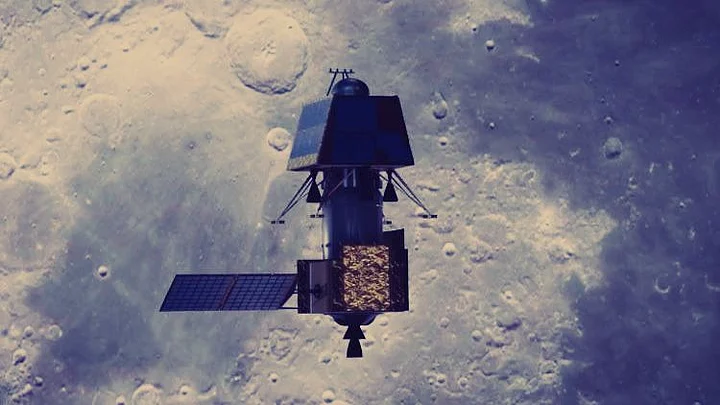Indian Space Research Organisation (ISRO) now has a photograph and the location of the Vikram Lander, which it had lost communication with during the Chandrayaan-2 mission. Although identifying the lander brings relief to ISRO, it has so far been unable to establish communication with it.
ISRO Chairman K Sivan said attempts to establish communication will continue for 14 days.
While this process is underway, the focus is slowly shifting to the orbiter, which is still operational.
ISRO had announced that the orbiter, which was designed for a mission life of one year, now has an extended life span of seven years, because the systems worked without any glitch and the trajectory was followed to the point that enough fuel was left. Scientists at ISRO are now looking at options to optimise this extended life span of the orbiter to study the moon further.
How was Vikram Located?
On Sunday afternoon, ISRO announced they have located the lander. “Vikram lander was located by Chandrayaan-2 and efforts to restore contact the probe will continue for at least 14 days,” these were chairman Sivan’s words after the discovery of the lost probe.
However, it remained unclear how this was done.
According to scientists at ISRO, who spoke on condition of anonymity, the process was rather straightforward. Since a general location of the probe was known, the photos from orbiter were scanned thoroughly. During this process they were able to identify an object.
In order to confirm that the object was the lander, old photos of the region were pulled out and they were compared with the new photos, based on longitude and latitude, thus confirming it was the Vikram lander.
However, ISRO officials refused to comment on the lander being tilted, after PTI reported, quoting an ISRO official as saying “The lander is there (on lunar surface) as a single piece, not broken into pieces. It’s in a tilted position.”
Focus on Research by the Orbiter
Even though ISRO is unable to communicate with the lander and rover, the mission is still on. Out of 14 payloads of the Chandrayaan-2 mission, eight scientific instruments were on-board the orbiter, while the lander and rover had four and two instruments respectively .
So despite losing communication with the lander and the rover, the eight instruments on-board the orbiter will continue to undertake the mission.
Among the eight payload on-board the orbiter are the Terrain Mapping Camera 2, Large Area Soft X-ray Spectrometer, Solar X-ray Monitor, Orbiter High Resolution Camera, Imaging IR Spectrometer.
These equipment are expected to perform tasks like mapping the lunar surface, examine the presence of major elements, measure the intensity of solar radiation and look for water on the moon, among other tasks.
More Tasks for the Orbiter
Apart from the tasks already allotted to the orbiter, because of the extended life span, ISRO is planning to use the orbiter for additional studies. According to sources, scientists are planning to bring the orbiter from the designated orbit of 100 km to a 50-km orbit.
The last time the moon was mapped from this orbit was by NASA’s LRO (lunar reconnaissance orbiter) in 2009. Since the Chandrayaan-2 orbiter has a much more sophisticated camera on-board, it would ensure better mapping of the moon’s surface.
According to scientists at ISRO, if the plans are approved, this would take place after the eight instruments on-board the orbiter finish their task, which could take around a year.
While the orbiter is expected to perform additional tasks, the primary objective for ISRO still remains the missing lander. Apart from re-establishing communication, the scientists at the premier space agency still have the task of identifying what went wrong with the lander. As of now, according to the scientists “there are no concrete answers”.
